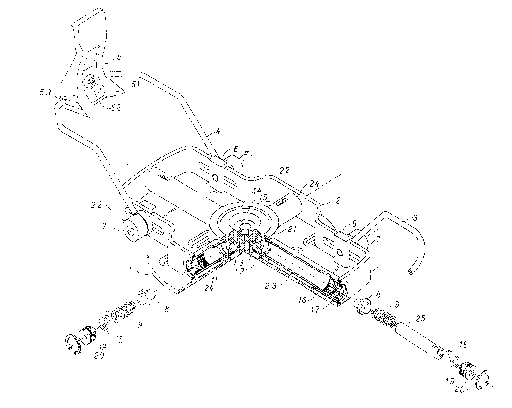Some of the information on this Web page has been provided by external sources. The Government of Canada is not responsible for the accuracy, reliability or currency of the information supplied by external sources. Users wishing to rely upon this information should consult directly with the source of the information. Content provided by external sources is not subject to official languages, privacy and accessibility requirements.
Any discrepancies in the text and image of the Claims and Abstract are due to differing posting times. Text of the Claims and Abstract are posted:
| (12) Patent Application: | (11) CA 2205913 |
|---|---|
| (54) English Title: | SNOWBOARD BINDING WITH RELEASE MECHANISM |
| (54) French Title: | ATTACHE DE PLANCHE A NEIGE AVEC MECANISME DE LIBERATION |
| Status: | Deemed Abandoned and Beyond the Period of Reinstatement - Pending Response to Notice of Disregarded Communication |
| (51) International Patent Classification (IPC): |
|
|---|---|
| (72) Inventors : |
|
| (73) Owners : |
|
| (71) Applicants : |
|
| (74) Agent: | |
| (74) Associate agent: | |
| (45) Issued: | |
| (22) Filed Date: | 1997-05-26 |
| (41) Open to Public Inspection: | 1998-11-26 |
| Availability of licence: | N/A |
| Dedicated to the Public: | N/A |
| (25) Language of filing: | English |
| Patent Cooperation Treaty (PCT): | No |
|---|
| (30) Application Priority Data: | None |
|---|
Releasable snowboard binding which includes upper complex (2) where therear boot holder (3) and front root holder (4) are fastened with screws (7) and
nuts (6) to the buckle (5), allowing adjustment at the same time. On the
central ring (2.1) tubular elements (2.3) and (2.4) are welded and set at 90
degrees distance, all encircled with four identical elements (2.2) and welded
together. Each tubular element includes pressing bolt (8) pushed by spring
(9) then tense display (18) and tense screw (19). Tubular elements (2.3)
include additional distance part (25) between spring (9) and tense display
(18). All pressing bolts (8) fit precisely into recesses in the upper ring (1.4)of lower complex (1), set at 90 degrees distance. The upper ring (1.4) is
tigtened with screw (1.5) to the lower ring (1.2) to friction ring (1.3)
in-between them. The lower ring (1.2) is welded to attaching plate (1.1),
fastened by screws to the snowboard.
Attache de planche à neige avec mécanisme de libération comprenant un complexe supérieur (2) sur lequel une fixation de botte (3) et une fixation de racine avant (4) sont assujetties au crochet (5) au moyen de vis (7) et d'écrous (6) qui permettent en même temps le réglage. Sur l'anneau central (2.1), des éléments tubulaires (2.3) et (2.4) sont soudés et disposés à 90 degrés l'un de l'autre, encerclés par quatre éléments identiques (2.2) et soudés ensemble. Chaque élément tubulaire comprend un boulon à pression (8) poussé par un ressort (9) puis un affichage de tension (18) et une vis de tension (19). Les éléments tubulaires (2.3) comportent une pièce additionnelle d'espacement (25) entre le ressort (9) et l'affichage de tension (18). Tous les boulons à pression (8) s'ajustent avec précision dans les logements de l'anneau supérieur (1.4) du complexe inférieur (1), disposés à 90 degrés l'un de l'autre. L'anneau supérieur (1.4) est serré par une vis (1.5) contre l'anneau inférieur (1.2) et un anneau à friction (1.3) entre les deux. L'anneau inférieur (1.2) est soudé à une plaque de fixation (1.1) assujettie à la planche à neige au moyen de vis.
Note: Claims are shown in the official language in which they were submitted.
Note: Descriptions are shown in the official language in which they were submitted.

2024-08-01:As part of the Next Generation Patents (NGP) transition, the Canadian Patents Database (CPD) now contains a more detailed Event History, which replicates the Event Log of our new back-office solution.
Please note that "Inactive:" events refers to events no longer in use in our new back-office solution.
For a clearer understanding of the status of the application/patent presented on this page, the site Disclaimer , as well as the definitions for Patent , Event History , Maintenance Fee and Payment History should be consulted.
| Description | Date |
|---|---|
| Inactive: IPC deactivated | 2012-01-07 |
| Inactive: IPC expired | 2012-01-01 |
| Inactive: First IPC from PCS | 2012-01-01 |
| Inactive: IPC from PCS | 2012-01-01 |
| Inactive: IPC from PCS | 2012-01-01 |
| Time Limit for Reversal Expired | 2000-05-26 |
| Application Not Reinstated by Deadline | 2000-05-26 |
| Amendment Received - Voluntary Amendment | 1999-08-26 |
| Deemed Abandoned - Failure to Respond to Maintenance Fee Notice | 1999-05-26 |
| Application Published (Open to Public Inspection) | 1998-11-26 |
| Classification Modified | 1997-08-19 |
| Inactive: First IPC assigned | 1997-08-19 |
| Inactive: IPC assigned | 1997-08-19 |
| Inactive: Filing certificate - No RFE (English) | 1997-07-28 |
| Filing Requirements Determined Compliant | 1997-07-28 |
| Inactive: Office letter | 1997-07-25 |
| Application Received - Regular National | 1997-07-25 |
| Abandonment Date | Reason | Reinstatement Date |
|---|---|---|
| 1999-05-26 |
| Fee Type | Anniversary Year | Due Date | Paid Date |
|---|---|---|---|
| Application fee - small | 1997-05-26 |
Note: Records showing the ownership history in alphabetical order.
| Current Owners on Record |
|---|
| STARCEVIC DINKO |
| Past Owners on Record |
|---|
| None |